SPECS THAT MATTER
Noise: inaudible
Distortion: unmeasurable by APx555 in passive mode, better than any recording and/or transducer on the planet in either active mode
Heat: gets moderately warm; not surprising for a Class A device
Size: desk- and rack-friendly
ALL SPECS
Passive:
Output Impedance: varies, maximum 4.8 kohms
THD: unmeasurable on APx555
IMD: unmeasurable on APx555
SNR: maxed on APx555 (typically >120dB ref 2/4V RMS)
Low Gain:
Gain: 1x/2x (SE/balanced)
Frequency Response: 20Hz-20Khz, -0.5db, 3Hz-200KHz, -3dB
THD: <0.001%, 20Hz-20KHz, at 2V RMS
IMD: <0.001%, CCIR (active stage)
SNR: >124db, A-weighted, referenced to 2V RMS
Output Impedance: 75 ohms
Maximum Output: >10V RMS
High Gain:
Gain: 4x/8x (SE/balanced)
Frequency Response: 20Hz-20Khz, -0.5db, 3Hz-200KHz, -3dB
THD: <0.001%, 20Hz-20KHz, at 2V RMS
IMD: <0.001%, CCIR (active stage)
SNR: >116db, A-weighted, referenced to 2V RMS
Output Impedance: 75 ohms
Maximum Output: >10V RMS
Inputs: 4 RCA pairs, selectable via front switch or remote
Outputs: 1 XLR pair and one RCA pair, both active at the same time
Gain Stage: Equipoise differential discrete Class A, zero feedback, 75V rails
Headphone stage: booster based on OPA1656, 150mW typical max output
Volume Control: relay-switched stepped attenuator with discrete thin-film 0.5% resistors , 64 1dB steps
Power Supply: Wall wart, 24VAC/6VAC, internal +45V/-28V and 5V/3.3V rails
Power Consumption: 15W typical
Size: 9"W x6"D x 1.5”H
Weight: 3 lbs

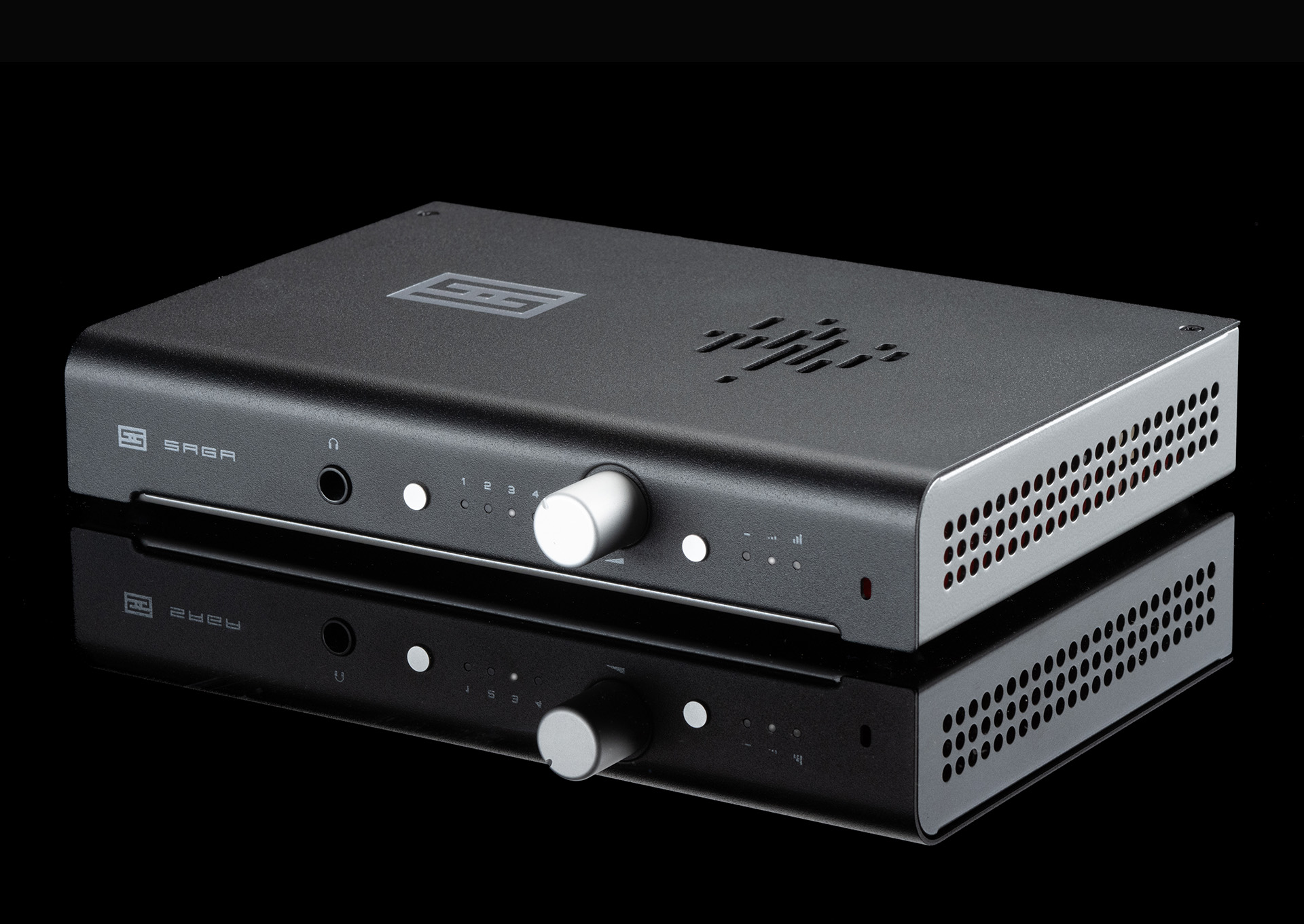
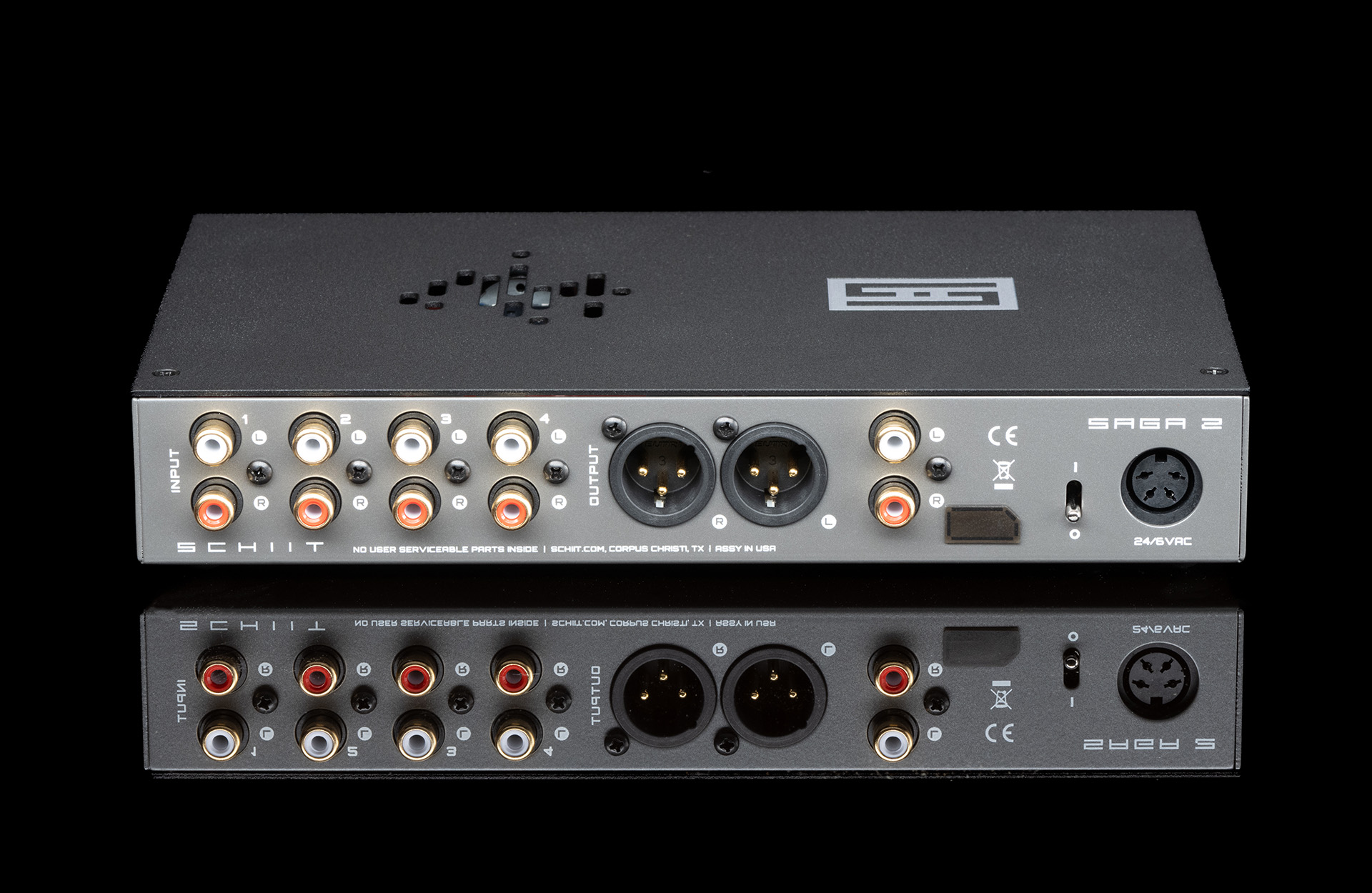
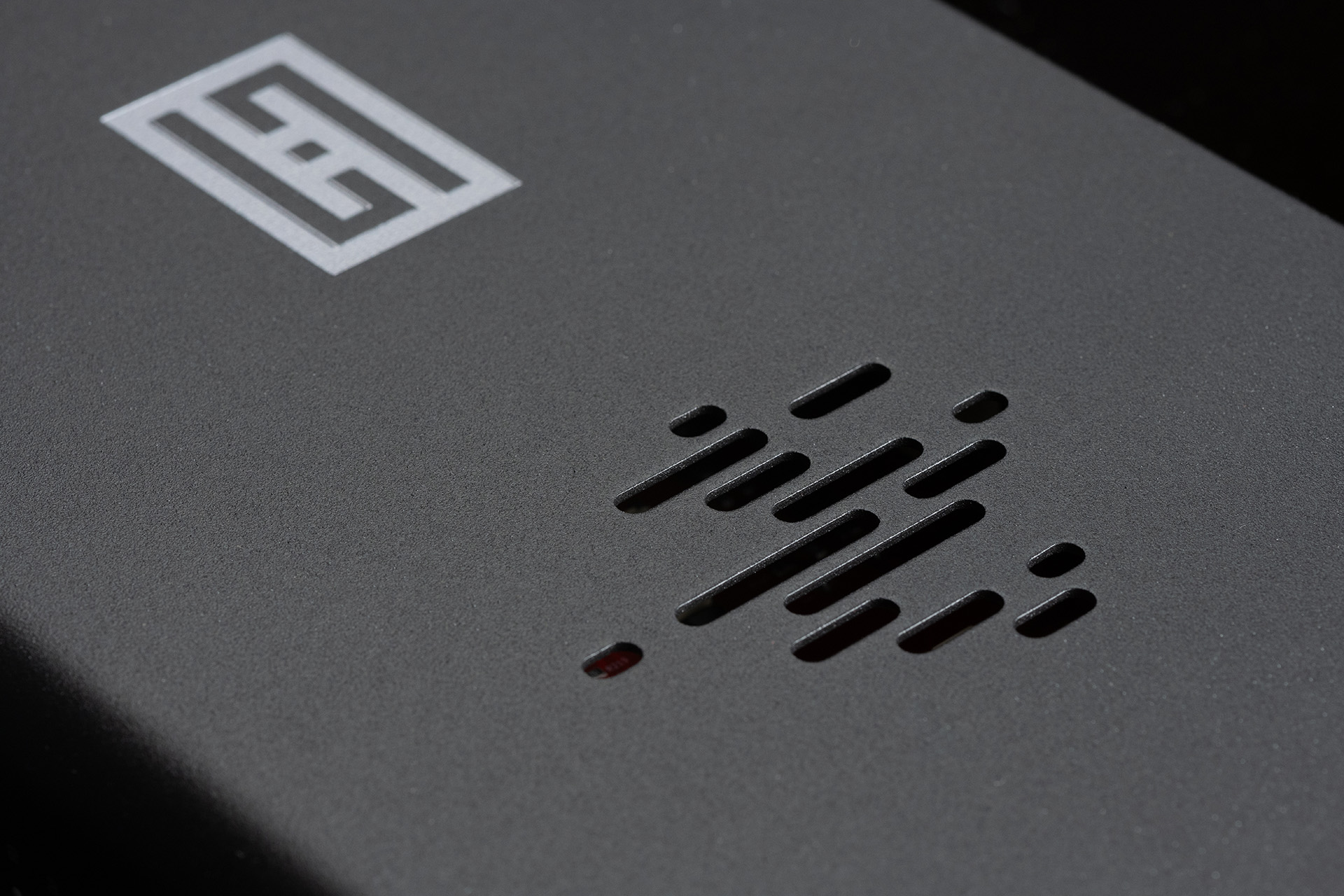
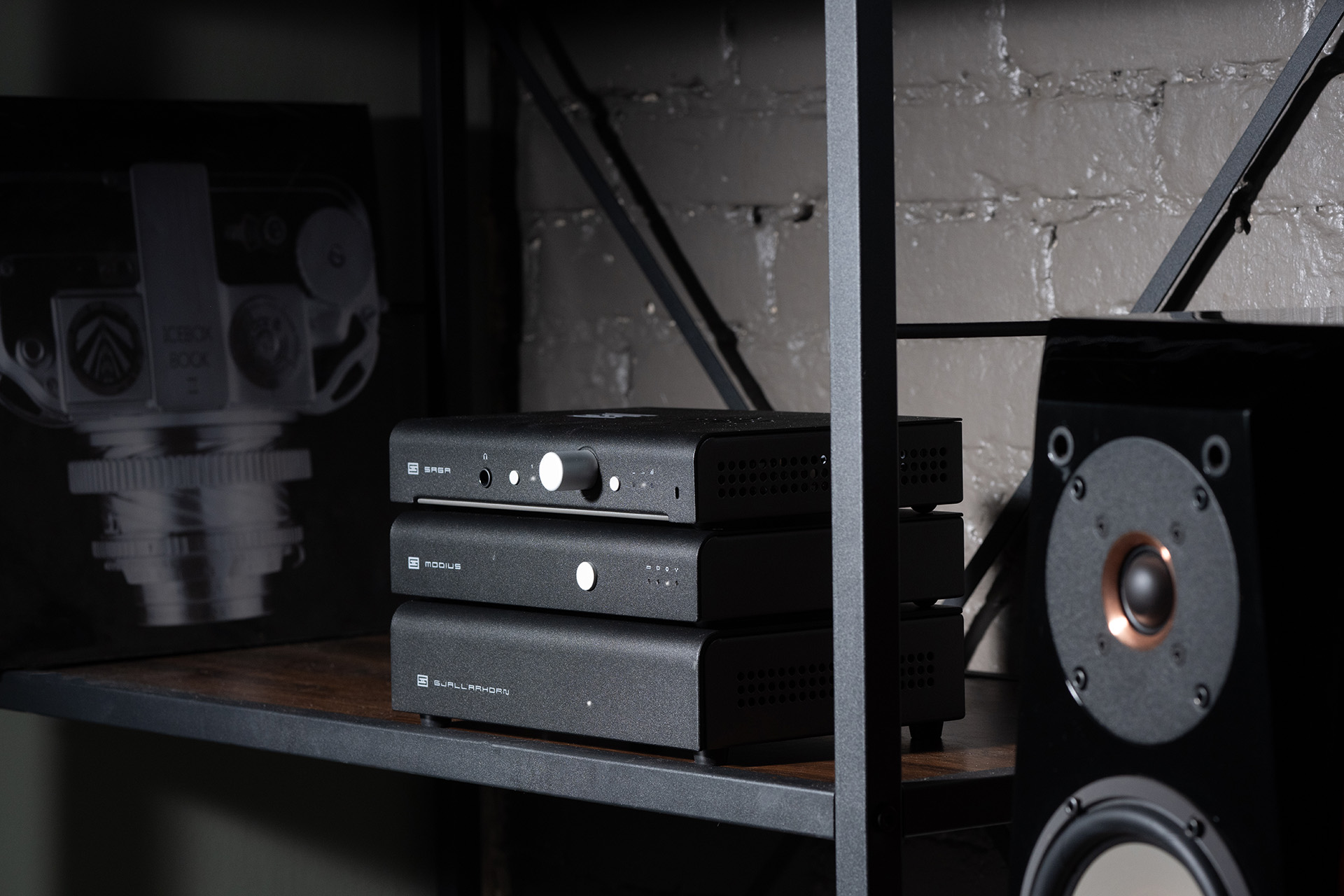
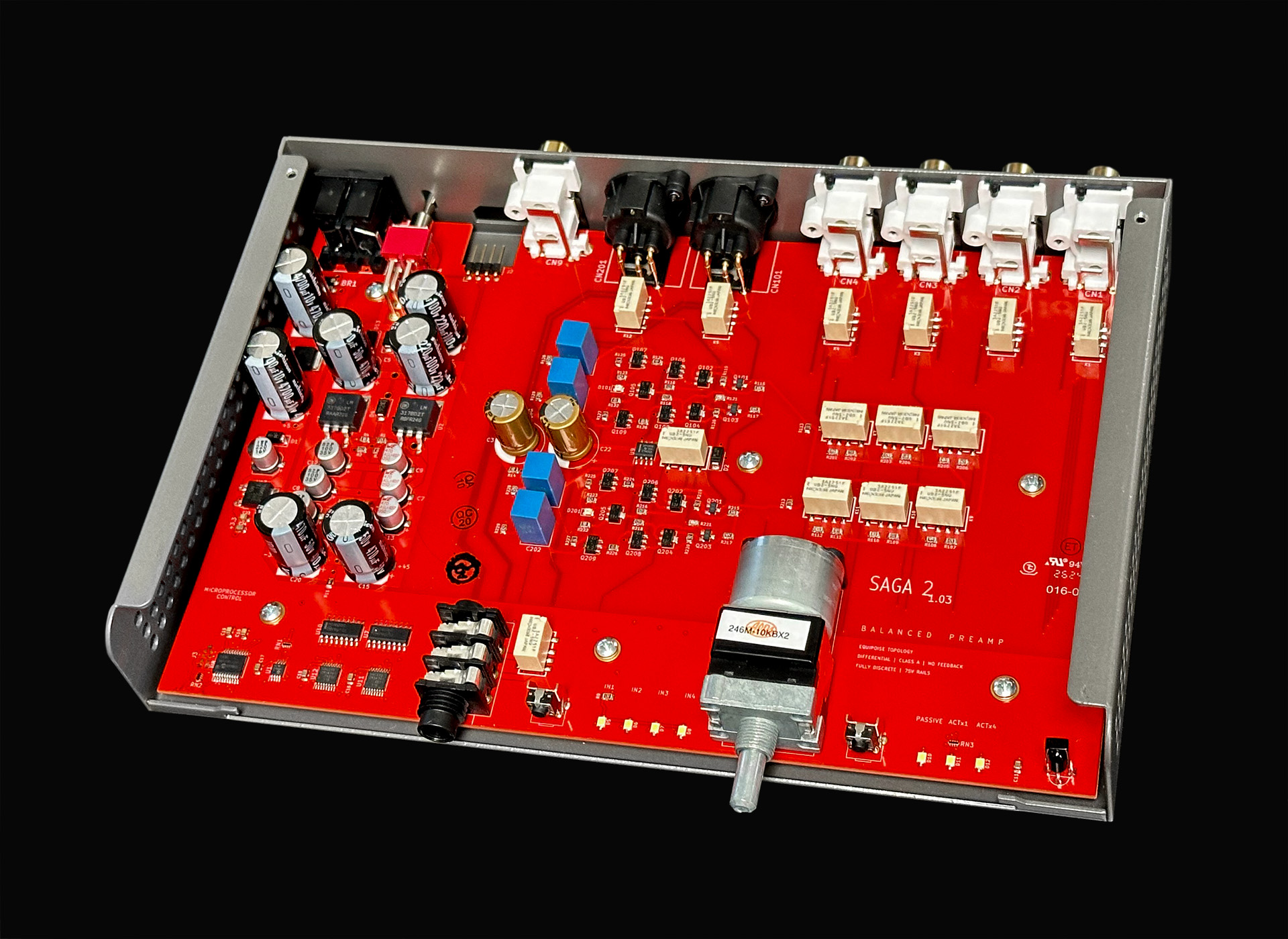
 $279 for a relay-potentiometer, passive-or-active, Class A, zero-feedback, 100% discrete, differential, 75V linear power supply preamplifier…with remote control and a headphone out? Yes. Welcome to Saga 2. (Oh, and for the non-audiophiles in the audience, what this means is this is an amazing device that allows you to control volume, switch sources, add gain, and listen to headphones, for a really nice price).
$279 for a relay-potentiometer, passive-or-active, Class A, zero-feedback, 100% discrete, differential, 75V linear power supply preamplifier…with remote control and a headphone out? Yes. Welcome to Saga 2. (Oh, and for the non-audiophiles in the audience, what this means is this is an amazing device that allows you to control volume, switch sources, add gain, and listen to headphones, for a really nice price).